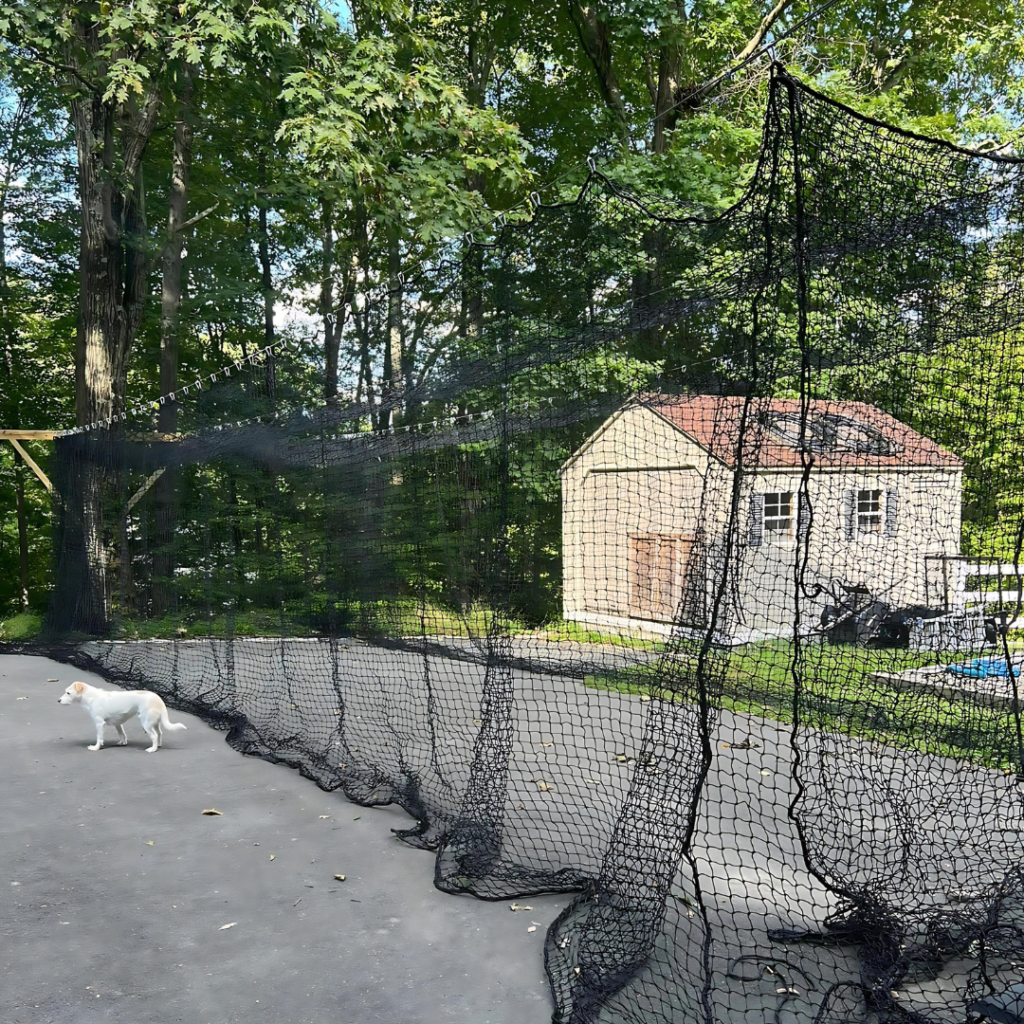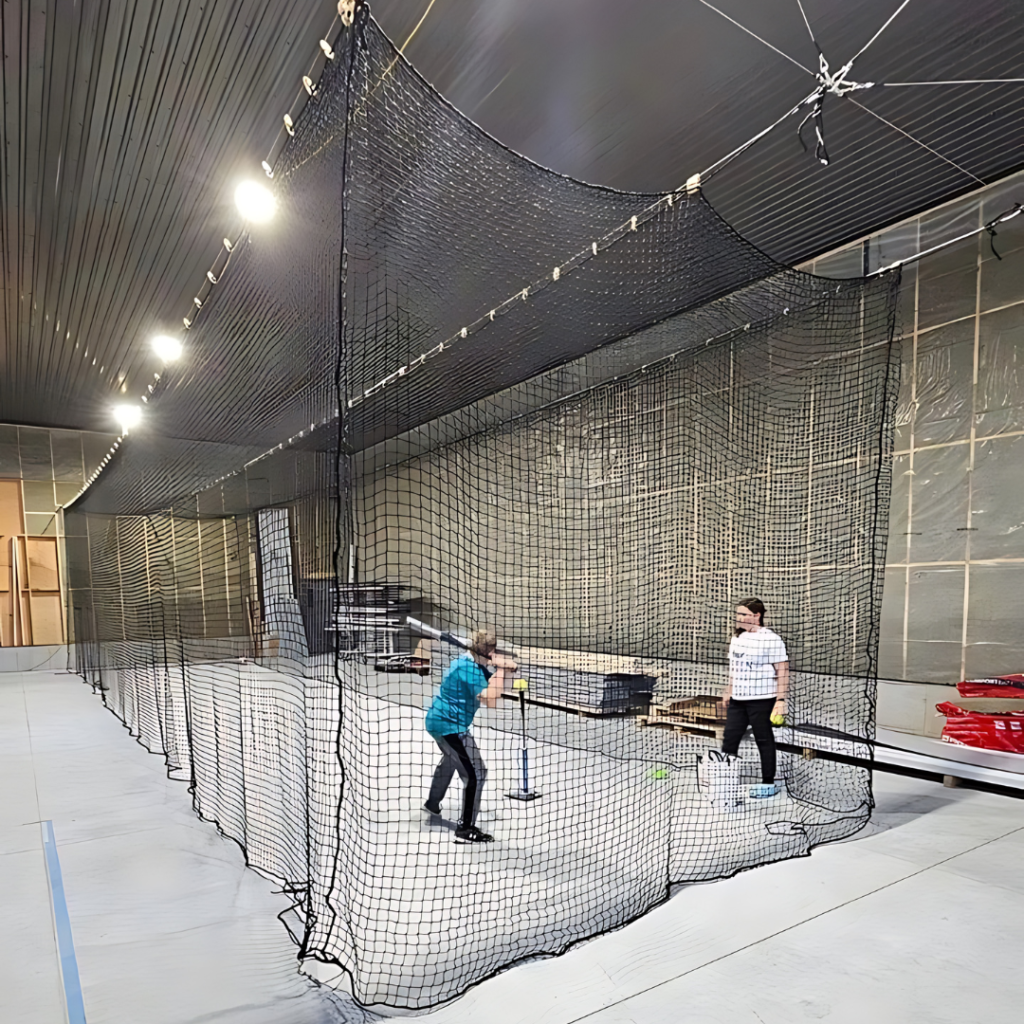A batting cage is a valuable addition to any backyard or training facility, offering a dedicated space to practice baseball and softball skills. And the right batting cage net is crucial for safety, containment, and functionality. Properly securing your batting cage netting ensures that it remains stable, avoids damage, and keeps balls from escaping. In this article, we’ll discuss the importance of proper netting installation, explore various methods to secure netting, and offer tips to ensure a professional finish. Let’s get started!
Why Properly Securing The Netting Matters?
Properly securing your batting cage netting is essential for several reasons:
-
- Safety: Secure netting keeps balls contained within the batting cage, reducing the risk of injury or property damage caused by balls escaping.
- Durability: Properly tensioned and secured netting is less likely to tear or sag, extending the lifespan of your batting cage.
- Functionality: Well-secured netting allows for a wider range of practice activities without risk of interference or damage.
- Compliance: Ensuring your batting cage netting is secure may be a requirement in certain areas, helping you comply with safety regulations.
Now you know why securing a batting cage net properly matters. Did you also know there’s a lot more to batting cage thickness that matters? Check out our guide, “Netting 101: Choosing the best batting cage netting thickness” and you’ll know how much thickness is right for you.

Common Methods to Secure a Net
There are several methods to secure batting cage netting, each offering unique benefits depending on your setup and needs. Here are the most common approaches:
-
- Zip TiesZip ties are a popular choice for securing batting cage netting due to their ease of use and versatility. They are available in various sizes and materials, allowing you to choose the right ones for your batting cage.Pros:
– Quick and easy to install
– Available in various lengths and strengths
– Ideal for temporary or semi-permanent setupsCons:
– Can degrade over time with sun exposure
– May require frequent replacement - CarabinersCarabiners are strong metal clips that can be used to attach netting to the batting cage frame. They provide a secure connection and are suitable for permanent installations.Pros:
– Durable and strong
– Ideal for permanent setups
– Easy to remove and reposition if neededCons:
– May be more expensive than zip ties
– Can be heavy, affecting netting tension
- Zip TiesZip ties are a popular choice for securing batting cage netting due to their ease of use and versatility. They are available in various sizes and materials, allowing you to choose the right ones for your batting cage.Pros:
-
- Wire or CableWire or cable can be used to create a tensioned system for batting cage netting. This method involves running a cable along the frame and attaching the netting to the cable with clips or ties.Pros:
– Provides excellent tension for the netting
– Ideal for large or permanent batting cages
– Reduces sagging and improves netting stabilityCons:
– Requires more complex installation
– May require additional hardware for support
- Wire or CableWire or cable can be used to create a tensioned system for batting cage netting. This method involves running a cable along the frame and attaching the netting to the cable with clips or ties.Pros:
-
- Rope or Bungee CordsRope or bungee cords can be used to secure batting cage netting to the frame. This method offers flexibility and allows for adjustments to maintain proper tension.Pros:
– Flexible and adjustable
– Ideal for temporary or semi-permanent setups
– Provides a soft connection, reducing wear on the nettingCons:
– May stretch over time, requiring readjustment
– Can degrade with sun exposure or weather
- Rope or Bungee CordsRope or bungee cords can be used to secure batting cage netting to the frame. This method offers flexibility and allows for adjustments to maintain proper tension.Pros:
Tips for Properly Securing Batting Cage Net

To ensure your batting cage netting is properly secured for safety and durability, follow these tips for a successful installation:
-
- Choose the Right FastenersSelect fasteners that are appropriate for your batting cage setup. Zip ties are ideal for quick and easy installations, while carabiners and wire systems offer more durability and strength. Consider the intended use and frequency of maintenance when choosing fasteners.
- Tension the Netting ProperlyProper tensioning is key to maintaining stable netting. Start by securing the netting at the corners of the batting cage, then work your way around the frame, ensuring the netting is tight and even. Avoid over-tightening, as this can cause excessive stress on the netting and frame.
- Reinforce High-Stress AreasIdentify high-stress areas where the netting is likely to experience the most impact, such as behind a batting tee or pitching machine. Reinforce these areas with additional netting or padding to prevent tearing and reduce wear and tear.
- Secure the Bottom EdgeEnsure the bottom edge of the netting is properly secured to prevent balls from escaping underneath. Use ground stakes, anchors, or heavy objects to keep the netting in place. This is especially important for outdoor batting cages to prevent wind from lifting the netting.
- Test for StabilityAfter securing the netting, test it for stability and safety. Give the netting a gentle tug to ensure it’s properly secured and doesn’t sag or move excessively. If there are any areas of concern, adjust the fasteners or add additional support as needed.
- Perform Regular MaintenanceRegular maintenance helps keep your batting cage netting in top condition. Periodically inspect the netting for signs of wear, such as fraying, tearing, or sagging. Replace damaged fasteners and adjust the tension as needed to maintain a safe practice environment.
Conclusion
Properly securing your batting cage netting is essential for safety, durability, and functionality. By using the right fasteners, ensuring proper tension, and reinforcing high-stress areas, you can create a stable and secure batting cage that provides a safe space for practice and training.
Remember to choose the appropriate method for securing the netting based on your setup and intended use. With the tips provided in this article, you’ll be well-equipped to secure your batting cage netting and enjoy years of enjoyable practice and skill-building. Good luck with your project, and happy hitting!
Did you know you can list your backyard batting cage on Cagelist.com and earn money by renting it out to other players? The better the quality and safety of your batting cage and the more resources it offers renters, the higher the hourly rate you’ll be able to charge.
Looking for inspiration and helpful tips for your batting cage project?
Join our Backyard Batting Cages Facebook group and subscribe to the CageList blog to connect with other owners and learn from their experiences.
